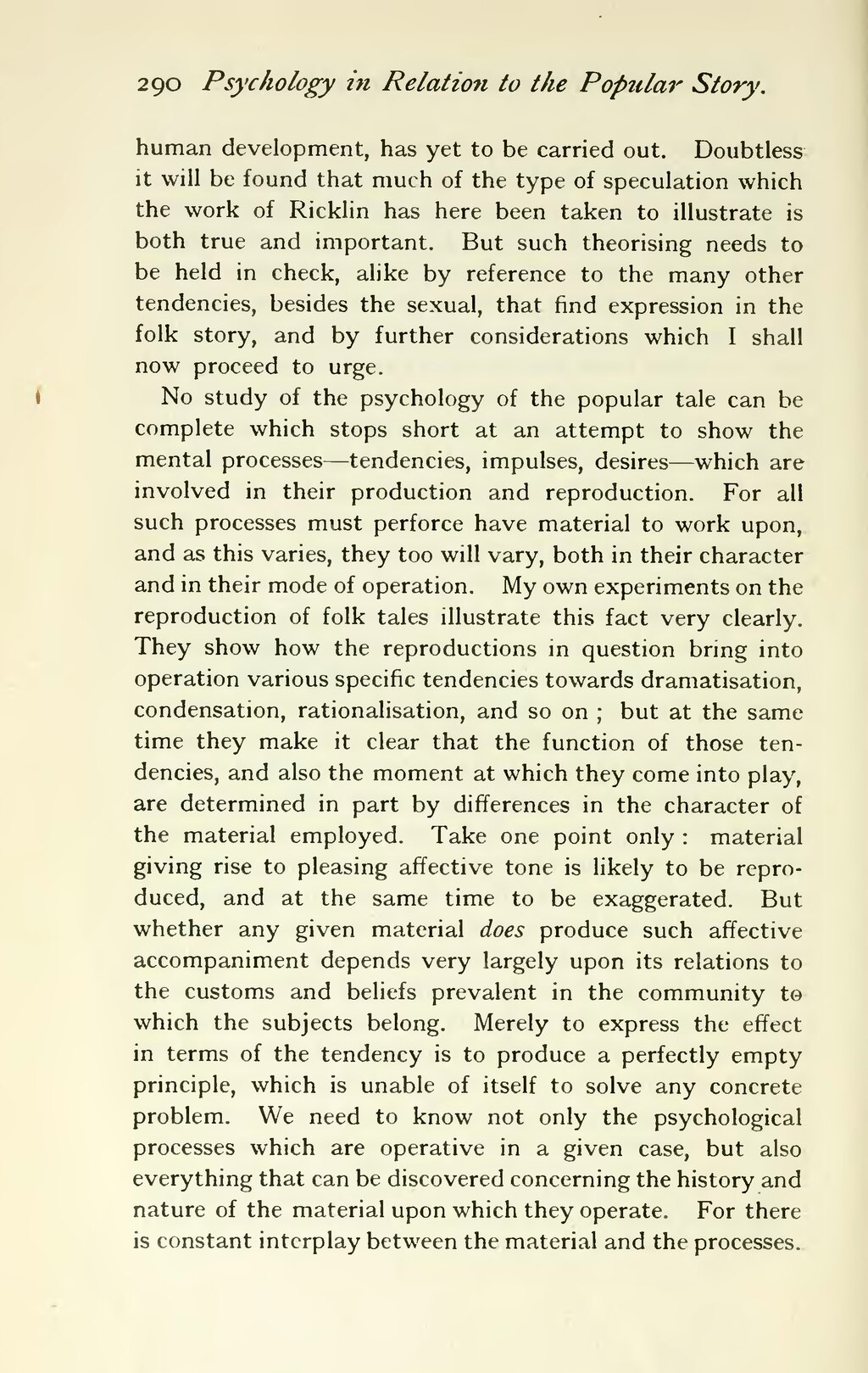human development, has yet to be carried out. Doubtless it will be found that much of the type of speculation which the work of Ricklin has here been taken to illustrate is both true and important. But such theorising needs to be held in check, alike by reference to the many other tendencies, besides the sexual, that find expression in the folk story, and by further considerations which I shall now proceed to urge.
No study of the psychology of the popular tale can be complete which stops short at an attempt to show the mental processes—tendencies, impulses, desires—which are involved in their production and reproduction. For all such processes must perforce have material to work upon, and as this varies, they too will vary, both in their character and in their mode of operation. My own experiments on the reproduction of folk tales illustrate this fact very clearly. They show how the reproductions in question bring into operation various specific tendencies towards dramatisation, condensation, rationalisation, and so on; but at the same time they make it clear that the function of those tendencies, and also the moment at which they come into play, are determined in part by differences in the character of the material employed. Take one point only: material giving rise to pleasing affective tone is likely to be reproduced, and at the same time to be exaggerated. But whether any given material does produce such affective accompaniment depends very largely upon its relations to the customs and beliefs prevalent in the community to which the subjects belong. Merely to express the effect in terms of the tendency is to produce a perfectly empty principle, which is unable of itself to solve any concrete problem. We need to know not only the psychological processes which are operative in a given case, but also everything that can be discovered concerning the history and nature of the material upon which they operate. For there is constant interplay between the material and the processes.
